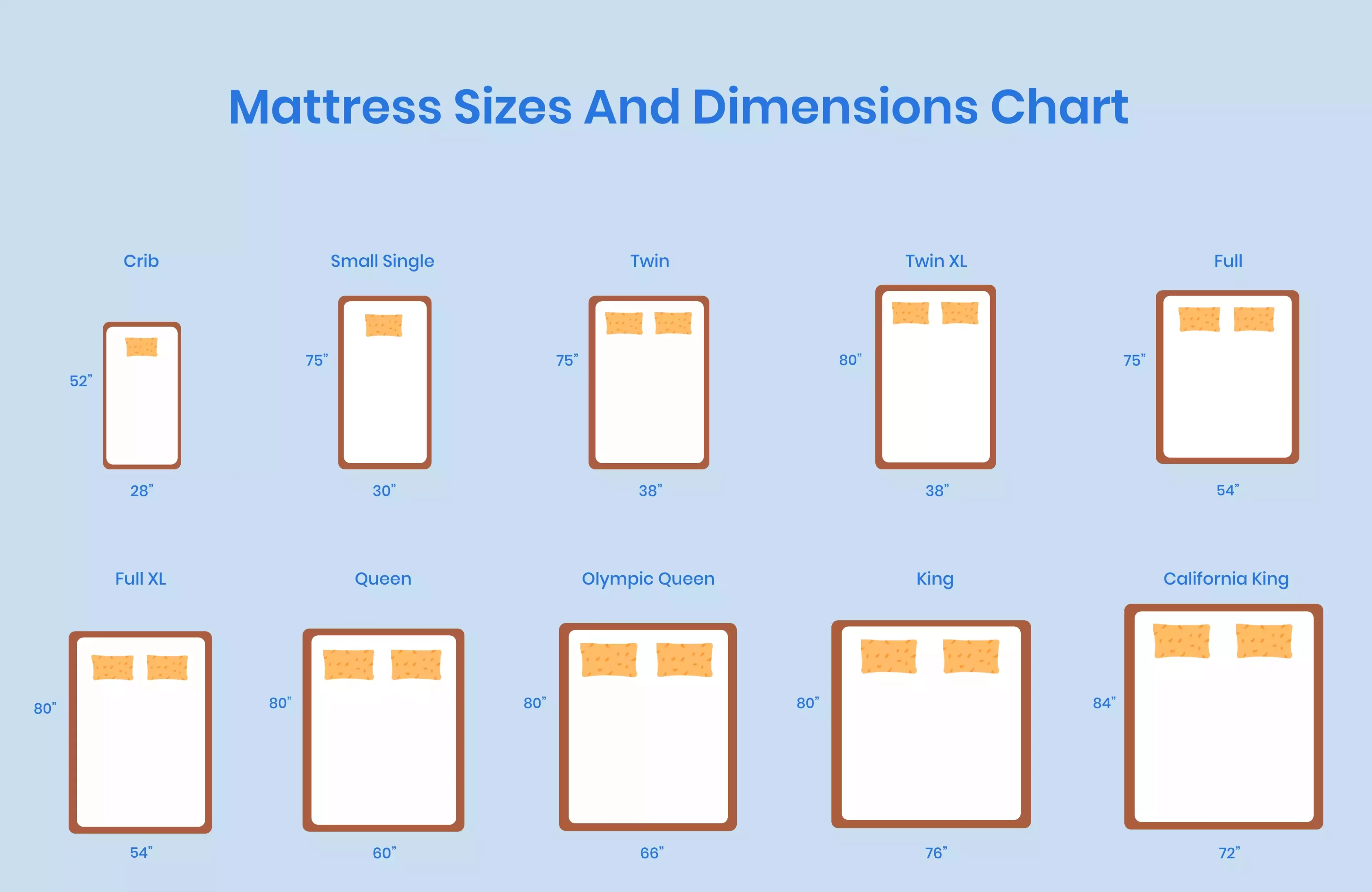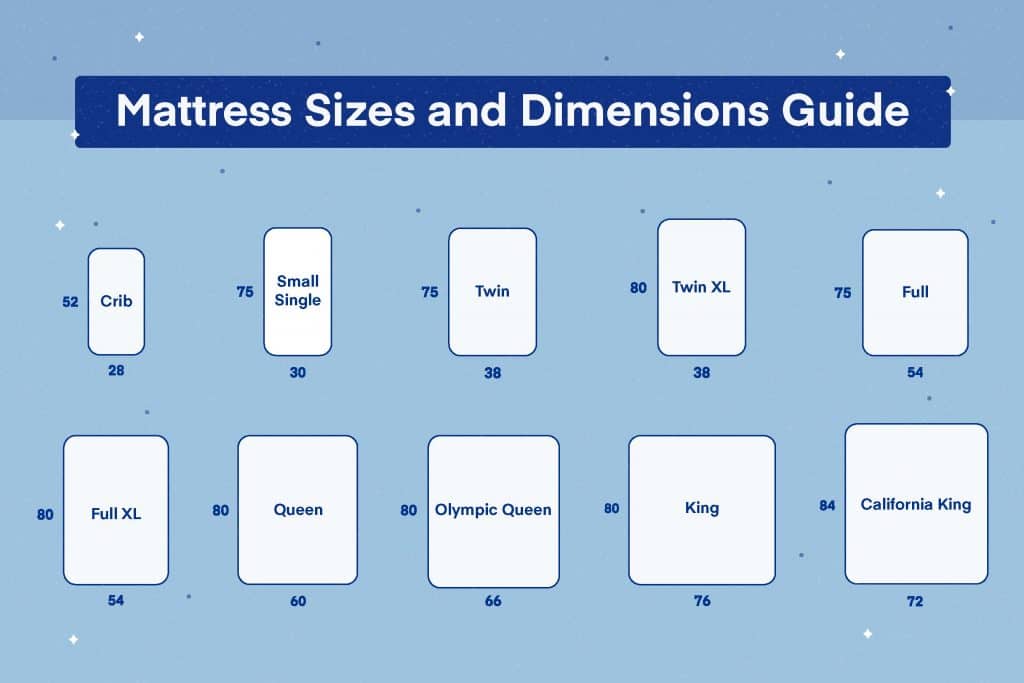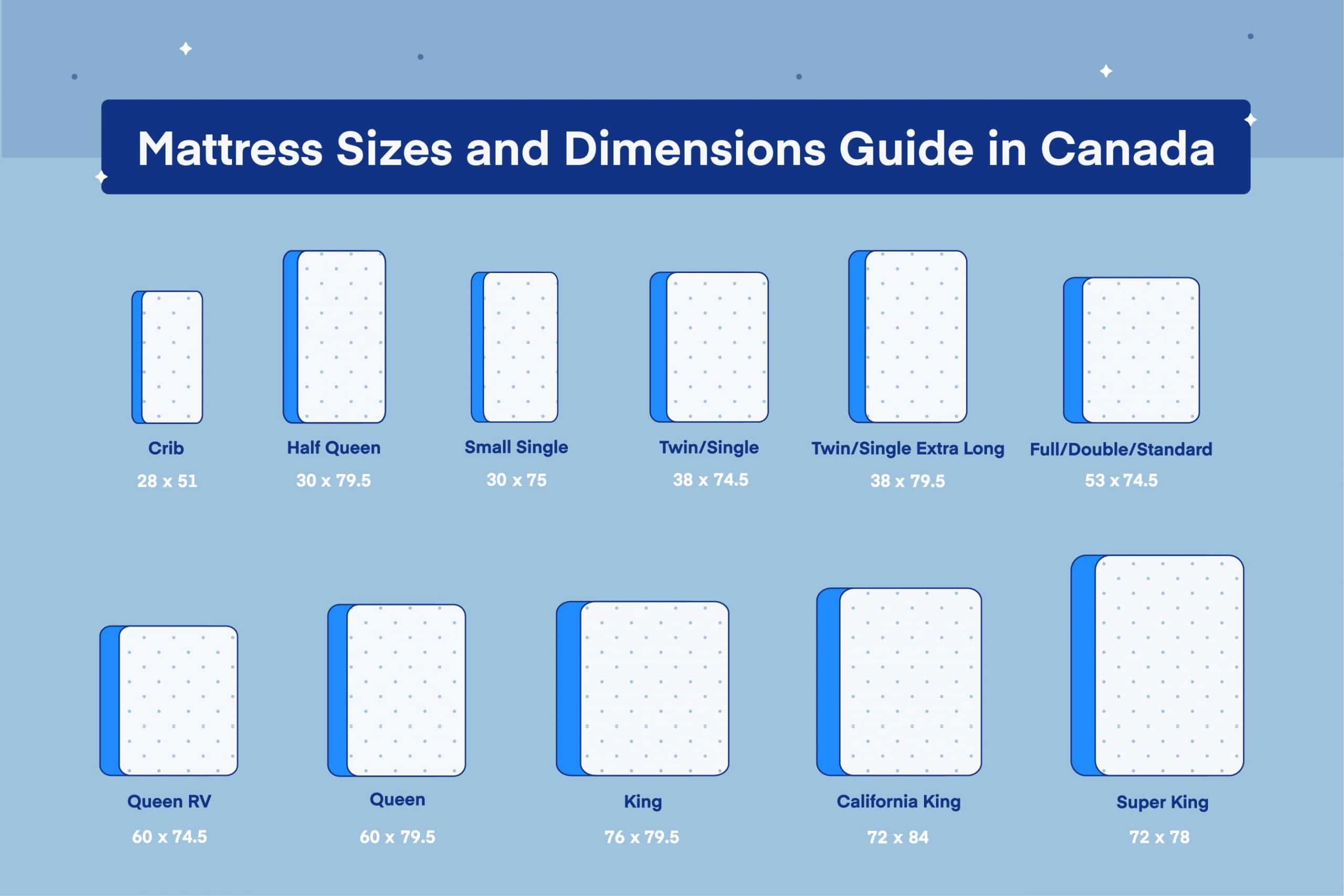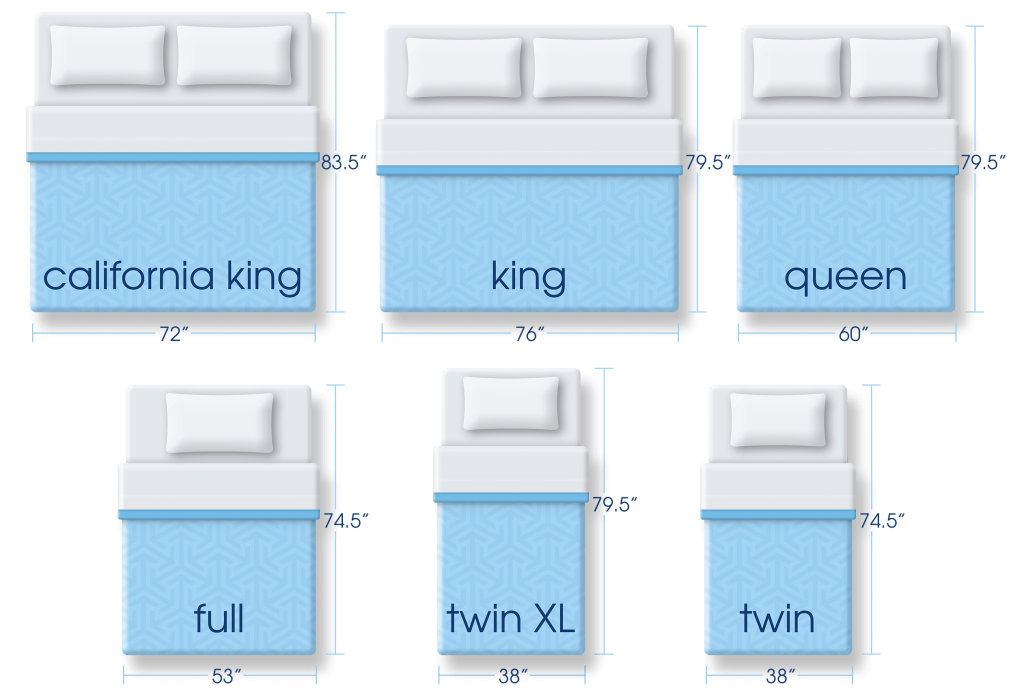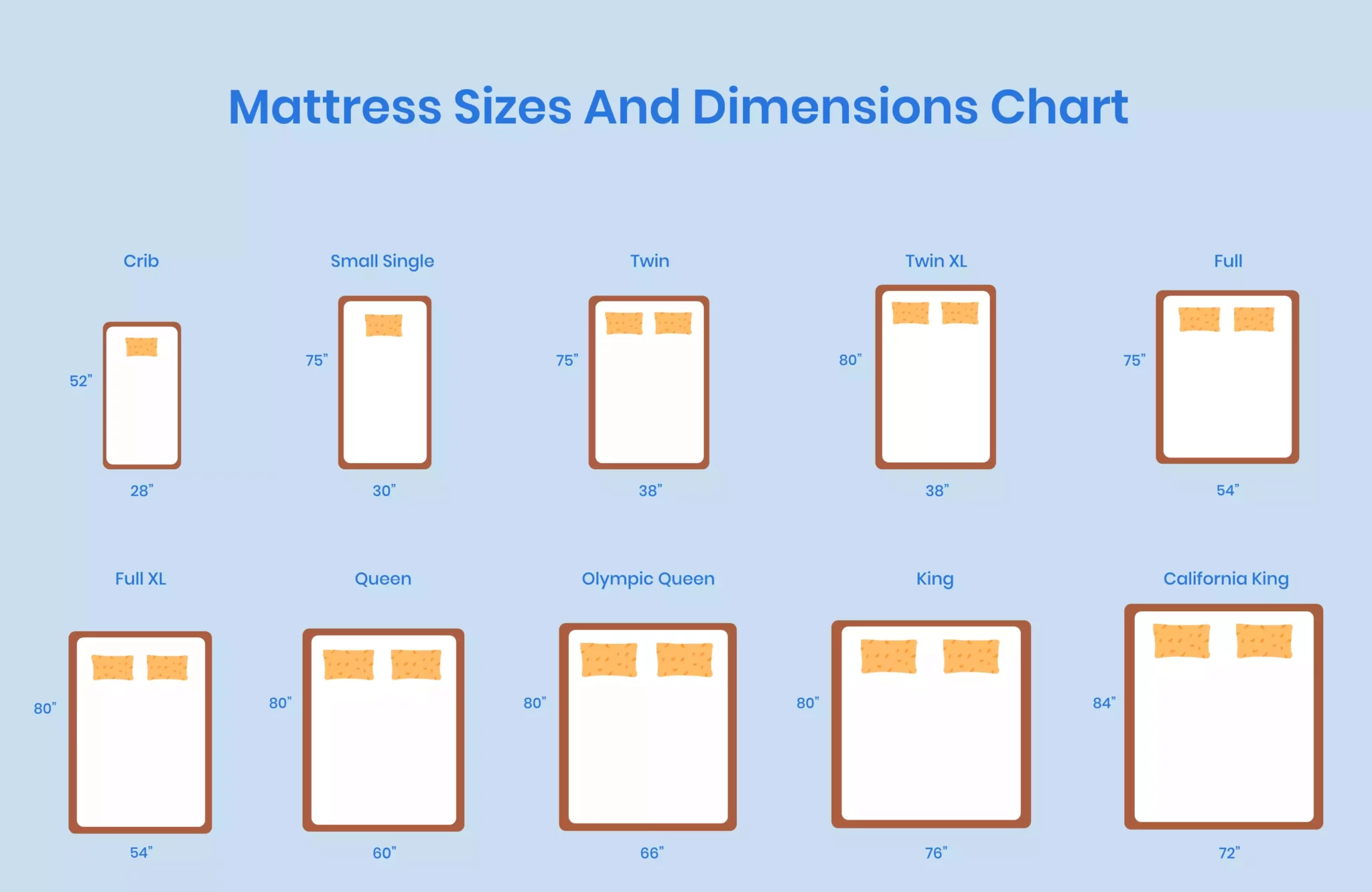When it comes to buying a mattress for your child's bed, one of the most important factors to consider is the size. Children grow quickly, and their mattresses need to be able to accommodate their changing bodies. With so many options available, it can be overwhelming trying to determine the best mattress size for your child's bed. To help make the decision easier, we have put together a list of the top 10 standard child bed mattress sizes.Standard Child Bed Mattress Sizes
The most common mattress size for a child's bed is a twin or single size, measuring 39 inches by 75 inches. This size is perfect for young children and can accommodate them through their teenage years. However, as your child grows, you may want to consider a larger size to provide them with more space and comfort while they sleep.What Size Mattress Fits a Child's Bed?
When deciding on the right mattress size for your child's bed, there are a few factors to consider. The first is the size of your child's room. If the room is small, a twin or single size may be the best option to save space. However, if the room is larger, you may want to consider a larger size to provide your child with more room to spread out. Another factor to consider is the size of your child. If your child is tall or growing quickly, a twin or single size may not provide enough room for them to sleep comfortably. In this case, a larger size such as a full or queen may be a better option.Choosing the Right Mattress Size for Your Child's Bed
After considering the size of the room and your child's size, it's important to choose a mattress size that will provide them with the most comfort while they sleep. For young children, a twin or single size is typically sufficient. As they grow, a full or queen size may be better suited to accommodate their growing bodies. In addition to the standard sizes, there are also specialty sizes available for children's beds such as toddler and bunk bed sizes. Toddler beds typically use a crib mattress, measuring 27 inches by 52 inches, while bunk beds may require a twin or single size with a thinner profile to fit into the top bunk.Best Mattress Sizes for Children's Beds
While there are many different mattress sizes available for children's beds, some are more commonly used than others. These include the twin, full, and queen sizes, as well as the toddler and bunk bed sizes mentioned above. The twin or single size is the most common, as it is a versatile size that can accommodate children of all ages. The full size is a popular choice for older children and teenagers, offering more room to spread out while still fitting in most standard-sized rooms. The queen size is a great option for larger rooms and can provide plenty of space for your child to grow into.Common Mattress Sizes for Child Beds
When looking at the dimensions of a child bed mattress, it's important to note that they can vary slightly depending on the manufacturer. However, the standard dimensions for each size are as follows: - Twin/Single: 39 inches by 75 inches - Full: 54 inches by 75 inches - Queen: 60 inches by 80 inches It's also important to consider the thickness of the mattress. A thicker mattress may provide more comfort and support, but it may also make it difficult to find sheets and bedding that fit properly.Understanding Child Bed Mattress Dimensions
When transitioning your child from a crib to a toddler bed, you may be wondering what size mattress is best. While there are toddler bed sizes available, they are not necessary. A crib mattress can fit comfortably in a toddler bed, and you can choose to upgrade to a larger size when your child is ready. If you do decide to purchase a toddler bed size mattress, keep in mind that they are typically the same size as a crib mattress, measuring 27 inches by 52 inches. However, they may be slightly thicker to provide more support for your growing toddler.Recommended Mattress Sizes for Toddler Beds
If you are unsure about the size of your child's bed, or if you are considering upgrading to a larger size, it's important to measure the bed frame before making a purchase. To do this, you will need to measure both the length and width of the bed frame, as well as the depth of the frame to determine the thickness of the mattress that will fit comfortably. Keep in mind that it's also important to consider the height of the mattress. A thicker mattress may be more difficult for younger children to climb onto, while a thinner mattress may not provide enough support for older children and teenagers.How to Measure for a Child's Bed Mattress
One common dilemma when choosing a mattress size for a child's bed is deciding between a twin and full size. While both sizes can accommodate children of all ages, there are some key differences to consider. The twin size is more compact and space-saving, making it a great option for smaller rooms or shared bedrooms. However, the full size offers more room for your child to grow into and can be a better option for older children and teenagers who may need more space while they sleep. It's important to consider the size of your child's room and their individual needs when making this decision.Comparing Twin and Full Mattress Sizes for Child Beds
In the end, the best mattress size for your child's bed will depend on a variety of factors, including the size of their room, their individual needs, and your budget. It's important to carefully consider these factors before making a decision and to measure the bed frame to ensure a proper fit. Remember, as your child grows, their mattress needs may change, and it's important to regularly assess if they need a larger size to accommodate their growing bodies. By choosing the right mattress size for your child's bed, you can ensure they have a comfortable and restful night's sleep, promoting their overall health and well-being.Finding the Perfect Mattress Size for Your Child's Bed
The Importance of Choosing the Right Size for Your Child's Bed Mattress

Ensuring Comfort and Proper Development
/284559-article-a-guide-to-the-standard-crib-mattress-size-5ac50d3ac5542e0037d552d1.png) When designing a child's bedroom,
choosing the right bed mattress size
is a crucial aspect that should not be overlooked. A comfortable and supportive mattress is essential for
a child's proper growth and development
. A mattress that is too big or too small can cause discomfort and disrupt your child's sleep, which can lead to various health issues.
One of the primary concerns when it comes to
child bed mattress size
is
ensuring proper spinal alignment
. Children's spines are still developing, and a mattress that is too soft or too firm can cause strain and affect their posture. It is recommended to opt for a medium-firm mattress that provides adequate support for their growing bodies.
Another factor to consider is
comfort
. Children are known to be active and spend a significant amount of time on their beds, whether it's for sleeping, playing, or reading. A mattress that is too small can restrict their movements and lead to discomfort. On the other hand, a mattress that is too big can be challenging for them to get in and out of, which can be dangerous for younger children.
Proper ventilation
is also essential when choosing a child's bed mattress size. A mattress that is too small can cause your child to overheat, especially during warm weather. It is crucial to choose a mattress that allows for proper airflow to ensure your child's comfort and safety while they sleep.
In conclusion,
choosing the right size for your child's bed mattress
is a crucial aspect of designing their bedroom. It not only ensures their
comfort and proper development
, but it also promotes a good night's sleep, which is essential for their overall health and well-being. So, be sure to
consider the size and other factors
mentioned above when selecting a mattress for your child's bedroom.
When designing a child's bedroom,
choosing the right bed mattress size
is a crucial aspect that should not be overlooked. A comfortable and supportive mattress is essential for
a child's proper growth and development
. A mattress that is too big or too small can cause discomfort and disrupt your child's sleep, which can lead to various health issues.
One of the primary concerns when it comes to
child bed mattress size
is
ensuring proper spinal alignment
. Children's spines are still developing, and a mattress that is too soft or too firm can cause strain and affect their posture. It is recommended to opt for a medium-firm mattress that provides adequate support for their growing bodies.
Another factor to consider is
comfort
. Children are known to be active and spend a significant amount of time on their beds, whether it's for sleeping, playing, or reading. A mattress that is too small can restrict their movements and lead to discomfort. On the other hand, a mattress that is too big can be challenging for them to get in and out of, which can be dangerous for younger children.
Proper ventilation
is also essential when choosing a child's bed mattress size. A mattress that is too small can cause your child to overheat, especially during warm weather. It is crucial to choose a mattress that allows for proper airflow to ensure your child's comfort and safety while they sleep.
In conclusion,
choosing the right size for your child's bed mattress
is a crucial aspect of designing their bedroom. It not only ensures their
comfort and proper development
, but it also promotes a good night's sleep, which is essential for their overall health and well-being. So, be sure to
consider the size and other factors
mentioned above when selecting a mattress for your child's bedroom.




















